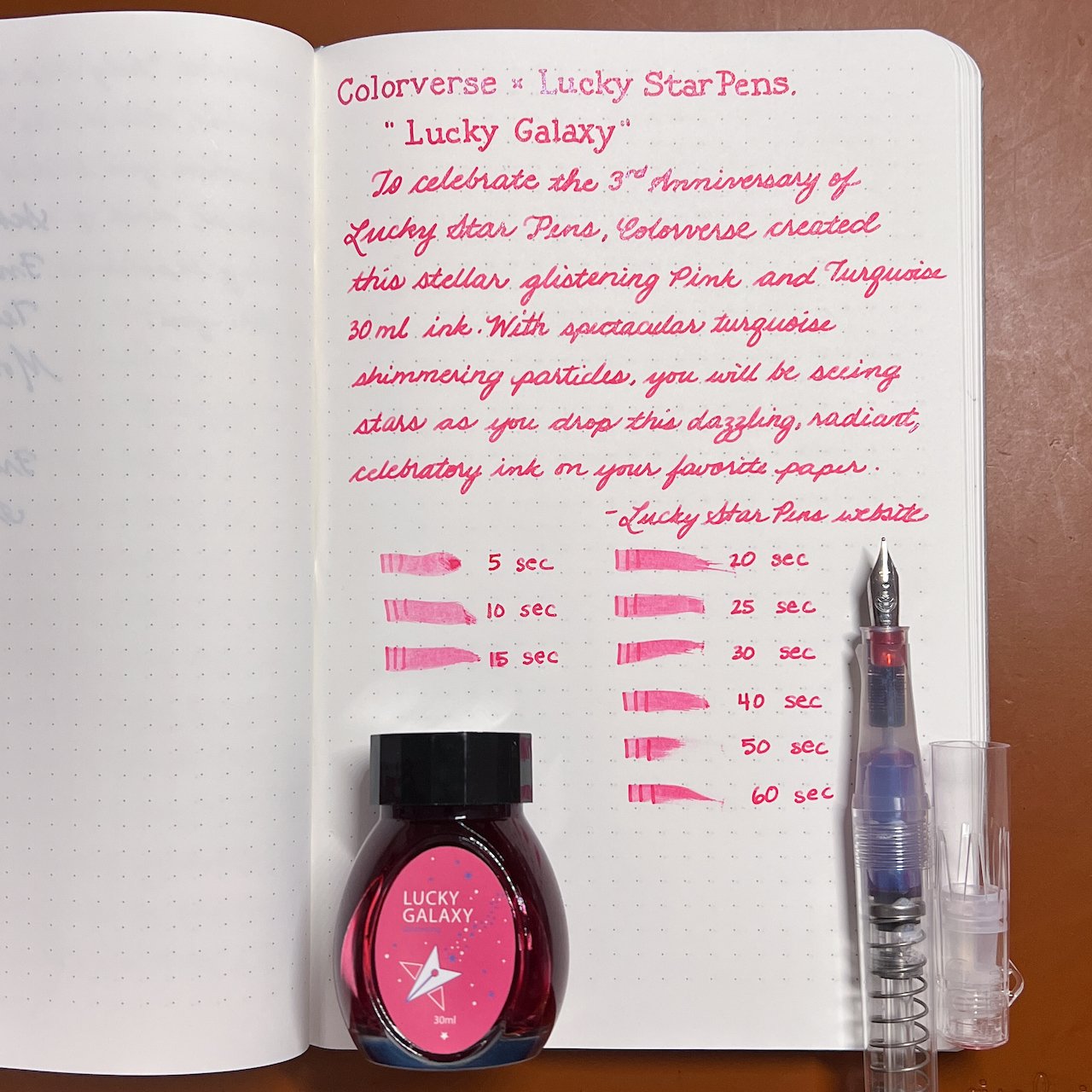Multi-shading inks are all of the rage these days, and Sailor is at the forefront with their Yurameku fountain pen ink lineup.
When they launched the 1st edition of these inks inks, I was excited, but my expectations were tempered due to the lightness of the colors. I reviewed one of the relatively darker shades in Itezora, and was pleasantly surprised. The color was dark enough for regular writing, and the color - wow - that’s what I signed up for. Is it blue? Green? Purple? How about yes to all of the above?
That is the idea of Yurameku in a nutshell. From Sailor’s website:
“The color changes depending on the length of time and the paper. A mysterious ink that shows glimpses of different colors in shades and streaks.”
Mysterious is the right word. And it’s nice to see Sailor point out, even subtly, that paper matters.
With the 2nd Edition Yurameku inks, Sailor brought in the darker shades, which are more up my alley for day to day use. I get why the light colors went first - they are much more visually appealing in pictures - but the dark colors are where it’s at for day to day writing.
Sailor includes converter stickers in some of their ink lineups.
I bought three bottles of the 2nd Edition at the Atlanta Pen Show, Date Gokoro, Suki Gokoro, and Zare Gokoro, and I’m reviewing the first in the list today. Looking at the packaging of Date Gokoro, I expected a purplish black ink, and I think that’s what we have here. Maybe.
Before even inking it up in a pen, I took my Kakimori dip nib out and laid some ink down on original 52 gsm Tomoe River, new Sanzen Tomoe River, Yamamoto Bank Paper, and Kokuyo Business Paper. I like to know how inks work on these papers. The first three are specialty papers that handle fountain pen inks well, albeit in different ways, and the last one is more of a stock, basic paper.
In general, the color is close on all paper types, but on closer inspection, different colors take prominence depending on the page.
The character of Date Gokoro shines on these fountain pen friendly papers. It’s a deep dark purple with hints of blue and black, a note of pink underneath, and a moderate red sheen after it dries. On the Kokuyo Business Paper, the color is much more flat. That makes sense since it is more absorbent. It’s good for fountain pens, but it dries fast. With these multi-shading inks, you want the ink to dry slower to get the full character of the ink to come out.
I inked up Date Gokoro in a new Mythic Pen Co. Aeschylus model, also bought at the Atlanta Pen Show, with a Medium steel Jowo nib. It flowed very well from this setup, with a deep, dark purple fresh from the nib, and lighter shades as it dried. This is the entire idea of the Yurameku ink lineup. Yes, many inks exhibit this exact behavior, but the multi-color appearance after it dries is what sets it apart. There is a lot going on with these lines on the page.
The color is all over the place depending on how much ink goes down on the page.
Dry time on Yamamoto Bank Paper was on the slow side, which, again, is the expectation here. I wouldn’t buy one of these inks if you worry about smearing the lines right after putting them down.
If you are interested in buying these inks, they are in the premium category. They are “only” $20 per bottle, but the bottle is 20 ml in size. I think we can all do that math, which, for ink, is expensive. I’m ok with it - maybe I’ll actually finish a bottle of ink for a change.
(I purchased this product at a discount from Dromgoole’s at the 2023 Atlanta Pen Show.)
Enjoy reading The Pen Addict? Then consider becoming a member to receive additional weekly content, giveaways, and discounts in The Pen Addict shop. Plus, you support me and the site directly, for which I am very grateful.
Membership starts at just $5/month, with a discounted annual option available. To find out more about membership click here and join us!
Random Kakimori streaks on Sanzen Tomoe River.
































